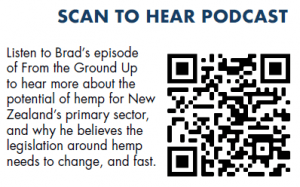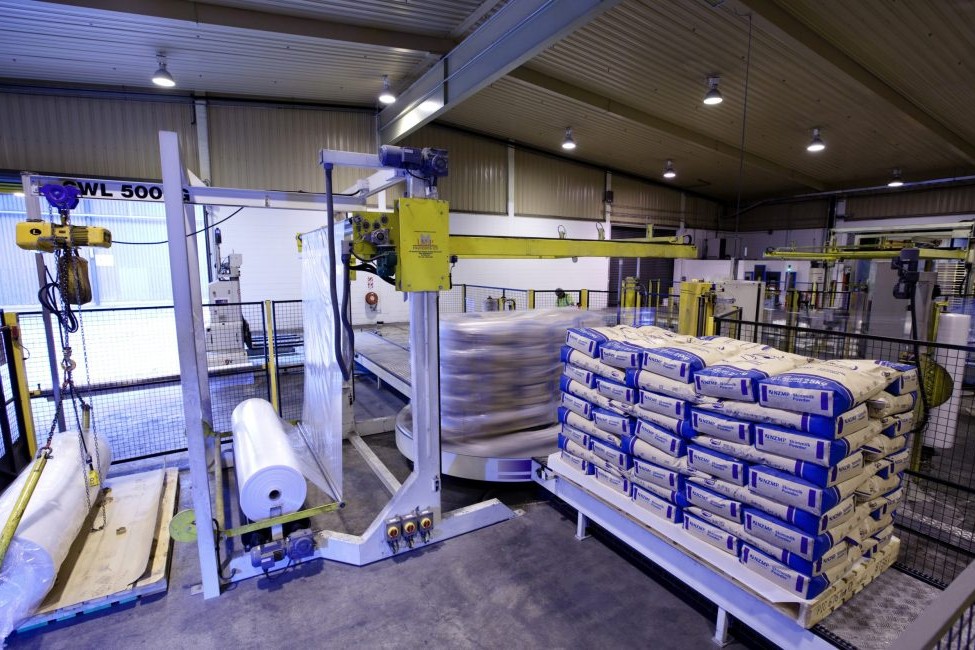Hemp offers opportunities for people to get into a whole different area of primary production, but present law limits possibilities. Rebecca Greaves reports.
 The Brothers Green is harnessing the potential of hemp with a range of value-added products, and they believe the crop could have the potential to tackle some of the environmental and agricultural issues faced by farmers in this carbon era.
The Brothers Green is harnessing the potential of hemp with a range of value-added products, and they believe the crop could have the potential to tackle some of the environmental and agricultural issues faced by farmers in this carbon era.
Started five years ago, The Brothers Green is a vertically integrated hemp business that makes a variety of hemp products, including a functional food and a skincare range. A supplements line is soon to be launched.
They contract-grow hemp in North Canterbury, with a drying and processing facility in the region too. The raw seed is turned into three ingredients, protein powder, oil and whole seed. The raw ingredients are then used in a range of retail and wholesale products.
Founder Brad Lake is one of a trio who make up the Brothers, and he left the comfort of his 9-to-5 banking job to take the plunge into the world of hemp.
“From our perspective we really see that for the development of the hemp industry and education that is so critical to the growth of our sector, retail products that can represent the quality and efficacy of what hemp can provide and that direct customer connection is our way of moving the industry forward.”
Hemp brings with it a unique set of challenges, not least the negative connotation it can conjure up for many people, who don’t understand the difference between hemp and marijuana, and the restrictive legislation regarding what it is possible to do with hemp – currently only 2% of the plant is able to be utilised. It was Brad’s job as a rural banker in North Canterbury that first opened his eyes to the possibilities of hemp. As an athlete playing rugby and trying to crack the Southland Stags, he was also keenly aware of what he put into his body from a nutritional point of view.
“We are not exposed to hemp very often and don’t see a lot of products on the shelf. How it came into the picture for me was in the primary sector focus. Starting out in my banking career, it was the worst drought in 30 years, getting paid less than the cost of production for milksolids, even within sheep and beef sector it was an incredibly difficult period, having to make critical decisions about offloading stock or buying in feed.”
Brad got to thinking about different options, like alternative cash crops or stock feed options that were drought-resistant. Hemp kept cropping up and seemed to address many of the issues that repeatedly came up during his meetings around family dining tables. From an environmental and agricultural perspective, Brad thought the ability for a farmer to grow a crop that had multiple or diverse revenue streams, the potential to be fed to stock and to mitigate nutrient losses and sequester carbon had to be worth considering. The potential to get into the plant protein space also presented a huge opportunity in his eyes.
“Despite anyone’s personal opinions on diets, we are seeing a growing green protein market on the global stage and, as food producers, I think we need to take that seriously.”
Hemp does not require pesticides or insecticides to grow, so chemical use is reduced, it is drought-tolerant and has an ability to upcycle nutrients lost. Farmers can diversify their income streams and get more out of the commodity cycle.
“Long term, I think it is going to open up opportunities for people to get into a whole different area of primary production, that was really what excited me.”
From a nutrition perspective, hemp is high in iron, potassium, zinc and magnesium, and is a complete plant protein.
“That’s just the seed, which is all we can use at the moment, but you go into the leaf and flower of the plant and you’re looking at really potent therapeutic products specifically treating things like Alzheimer’s and Parkinson’s.”
Brad says New Zealand is in a perfect storm and needs to do something drastic to shift the dial on what we’re doing when it comes to reducing carbon emissions onfarm. “We’ve done calculations around carbon sequestration or carbon offset for a dairy farm, and if we planted just 10% of a dairy platform in hemp, that would be a 51% reduction in that farm’s carbon emissions.”
Brad explains that the key numbers they measured were for fibre crops. Looking at a cash fibre crop, most growers globally are growing between 7-10 tonnes of hemp stalk per hectare. In NZ, this figure is about 5t. There is potential to increase this with better genetics and further testing, he says.
One tonne of harvested stem contains; 0.7t of cellulose (45% carbon), 0.2t of hemicellulose (48% carbon) and 0.06t of lignin (40% carbon).
“It follows that every tonne of industrial hemp stems contains 0.445t of carbon absorbed from the atmosphere (44.46% of stem dry weight). Converting carbon to CO2, 12t of carbon equals 44t of CO2, that represents 1.63t of CO2 absorption per tonne of hemp stem harvested.”
THE SCENARIO
Average dairy farm CO2 emissions 0.77kg CO2 per kg milksolids.
Say typical NZ farm produces 1182kg MS/ha and 910.1kg CO2/ha.
Normal 155ha dairy farm = 141t CO2
10% dairy platform in hemp = 15ha
15ha hemp = 75t hemp stalk
75t hemp stalk = 122t CO2
CO2 Emissions 86% of dairy emissions, reduced by 14%
Brad says there are two ways to look at the hemp opportunity, as a fibre crop and as a seed crop. A seed crop has about 30-40% less hemp stem harvested than a fibre crop. Fibre crops can be used for industrial fibres, textiles, fabrics and building materials, while a seed crop will be used for products like hemp hearts, stock feed, oils and protein powders.
A seed crop will net about $3000 per hectare, while the returns on a fibre crop are less certain at this stage, with his best estimate at about $2000/ha. The returns are highly dependent on yields and there is huge room for improvement in this department in NZ. NZ yields are between 60%-100% behind Canada and Europe at present.
Crops are planted in November and harvested at the start of March, and the plant is best suited to free-draining soils and irrigation.
Brad says there is no data yet on nutrient impacts, but this topic is being explored through research with Lincoln University.
Major progress for the industry would be allowing hemp to be fed to stock (under current law this is not permitted) as it is high in protein, contains Omega 3, magnesium, iron and zinc.
THE NUMBERS:
1t carbon = 3.66t CO2
2.24t hemp stem = 1t carbon
1t hemp stem = 0.445t of carbon
1t hemp stem = 1.63t CO2
5t hemp stem = 2.225t carbon absorbed
5t hemp stem = 8.14t CO2/ha
The roots and leaf mulch (not including the hard-to-measure fibrous root material) left on the ground represented about 20% of the mass of the harvested material in initial field trials overseas. The resulting carbon content absorbed but remaining in the soil would therefore be about 0.084 tonnes per tonne of harvested material.





